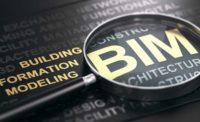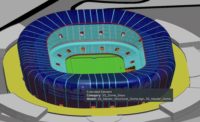“A digital twin is a virtual representation of real-world entities and processes, synchronized at a specified frequency and fidelity.”
- Digital Twin Consortium

Today’s general contractors seek to move from capture to action in near-real time in order to maintain a continuous “as-built” state of the building delivery model. The goal is to eliminate latency and noise between design intent and constructed reality by eliminating latency and noise between data capture and insightful decision making.
Let’s review a few examples of how this is being done in the field today.
Reality Capture for GCs Coordinating in 2D
BIM doesn’t often survive the upstream design scope of architects and engineers, leaving GCs to manage as best as they can with static 2D sheet sets. These GCs therefore favor capturing with photospheres or 360° video via handheld cameras, then contextualizing discrete image locations or aligning entire video paths to 2D drawings, which are managed in intelligent project tracking software.
The market leaders in this software category are aggressively rolling out A.I. features that incorporate machine learning and computer vision to semantically interpret building elements from pixel and depth data. This allows their customers to answer critical construction questions based solely on image and video input. Further integration is required to automatically (and effectively) associate this semantic output with a centralized digital delivery asset, like BIM.
Reality Capture for GCs Coordinating in 3D
GCs that coordinate in 3D, as well as many subs dealing with three-dimensional complexity such as the MEP trades, tend to favor capture with highly accurate point clouds via laser scanners. While impressive analysis tools are available, laser scan processing software typically lacks fully automated mechanisms for answering business questions within the BIM context. BIM platforms themselves are simply not designed for reality capture ingestion at scale, leaving an analysis gap for younger startups to fill with browser-based software solutions that can associate point cloud features directly with BIM elements.
The Digital Twin Is an Operations System, Not Just a Delivery Mechanism
While a spectrum of Capture-to-Act solutions and workflows exists, all reality capture methods trend similarly when it comes time to act. GCs seek the automation of work-in-place quantification to answer these key questions:
1. Was the designed element installed?
2. Was it installed in the specified position?
3. Was it installed clash-free?
4. Was it installed on schedule?
In addition to providing value by allowing for more comprehensive project planning, making more timely subcontractor payments through trusted and automated work-in-place quantification methods, and solving other costly business problems, the answers provide a valuable set of historic asset data. That data can be coupled with project geometry and metadata from BIM to generate a 4D, as-built deliverable for an owner. With little to no cleanup required at handoff, the owner can begin the work of building and maintaining the digital twin, incorporating streaming operational data such as environmental controls, security, tenant access, parking systems, intelligent maintenance, and many more.
We tend to use the term digital twin loosely in AEC when speaking of coupling reality capture with a design model. With some exceptions for simulating complicated construction operations, a true twin is not a delivery or GC asset, but rather an Owner/Operator asset of increasing value relative to the complexity of operating a facility.
How Do I Prepare My Business For Tomorrow's Opportunities?
The key to delivering future owner value as a GC is the ability to synchronously manage well-structured, streaming data for incorporation into a 3D digital asset, such as BIM. When this is accomplished "in post" as a revision to the design model at handoff, an enormous amount of cleanup labor goes into making the data usable in the operations lifecycle, specifically for import into systems such as IWMS or CMMS.
The building industry will understandably struggle in this initial stage to adopt live fixed and mobile robotic sensor data streams into digital building assets. Thus, only a few of the most sophisticated owners, operators, and GCs are reasonably capable today of exploiting the advantages of twins. This is further complicated for GCs whose focus is not on 3D digital assets, but rather on tracking progress and issues of augmenting construction documents with 360° site imagery.
While Spot, Boston Dynamics’s agile robot that I manage, has been disruptive in solving data capture with autonomously mobilized sensors in interior environments, adjacent technologies must be put in place to make it feasible for our industry to capitalize on providing owners with proto- or operations-ready twins.
Is There An App for That?
A natural question is “What new app should I purchase?” While the big AEC software players are indeed focusing on digital twin management systems, a functional setup is unlikely to be as easy as purchasing a single piece of software.
Walking robots and building sensor systems continuously streaming data into your model is a plumbing problem of unprecedented magnitude and complexity. It requires many interoperable applications, common data environments, cloud storage and services, 5G communications networks, indoor localization and tracking … and, well, you get the picture.
No, it would seem that there’s not just an "app for that."
As a construction robotics product manager, I build value today by connecting robots to 2D drawing sets. To build value tomorrow, I’ll connect robots to digital twin cloud services and network infrastructure for interoperation with next-gen real estate management and construction delivery systems, whether they be “true” twins or proto-twin 4D construction platforms. You can start to see why integrating robotics into BIM (as we practice it today) might not make sense to prioritize, although it might seem like the obvious starting point.
Developments in AI Create an Enormous Opportunity
Improvements in A.I. will greatly impact the formation of digital twin services during delivery, specifically a collection of easily distributable computer vision models for semantic recognition of building elements and related objects outside the proprietary, siloed confines of any single software application. This technology will factor heavily into the predictive-simulation-for-improved-decision-making element of the twin, at least in terms of how visual sensors assist in predictive construction (i.e. “Now that I finally know what’s going on, how do I make better decisions?”)
A.I. advancements will therefore create enormous business opportunities for now-aspirational visions of twins, while unlocking full-building lifecycle revenue streams. And who will usher in this new era? It’s hard to say who is both initially prepared and will benefit the most. Architects, working with Owners across the entire digital building lifecycle, can coordinate delivery to maximize value and maintain owners as long-term clients. GCs are responsible for handoff and remain firmly in control of on-site reality capture protocol. A variety of consultants who specialize in VDC services are also well positioned for the opportunity, which is clearer than ever and largely up for grabs.
Brian Ringley is a construction technologist at Boston Dynamics where he promotes new value-add autonomous capabilities for construction project delivery and works to expand the construction application ecosystem with the Spot SDK.





Post a comment to this article
Report Abusive Comment